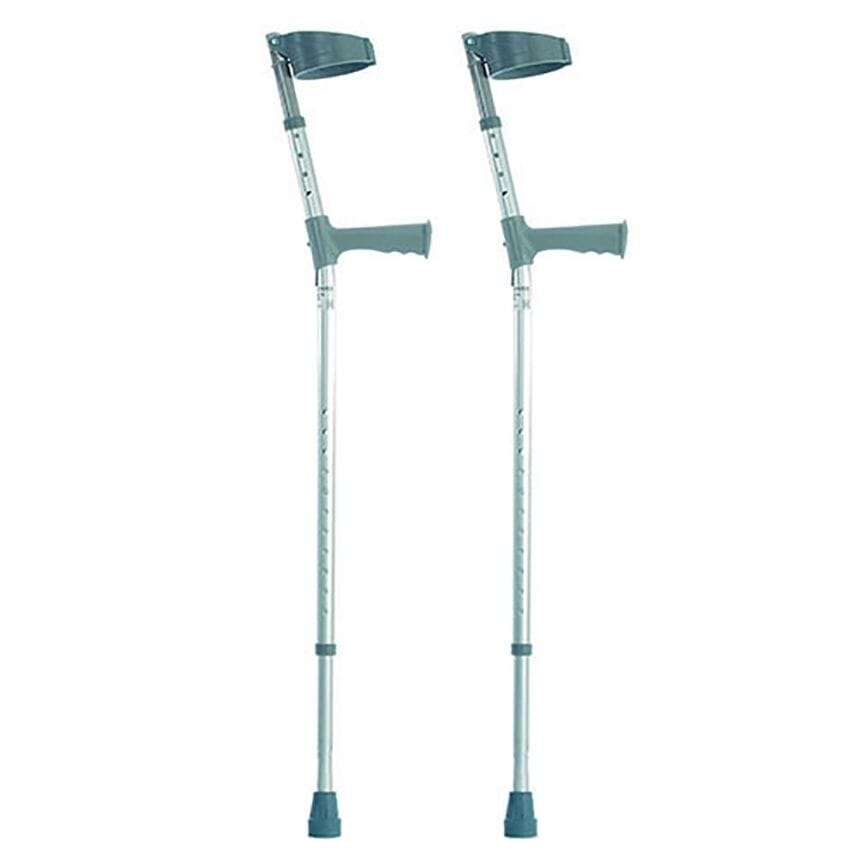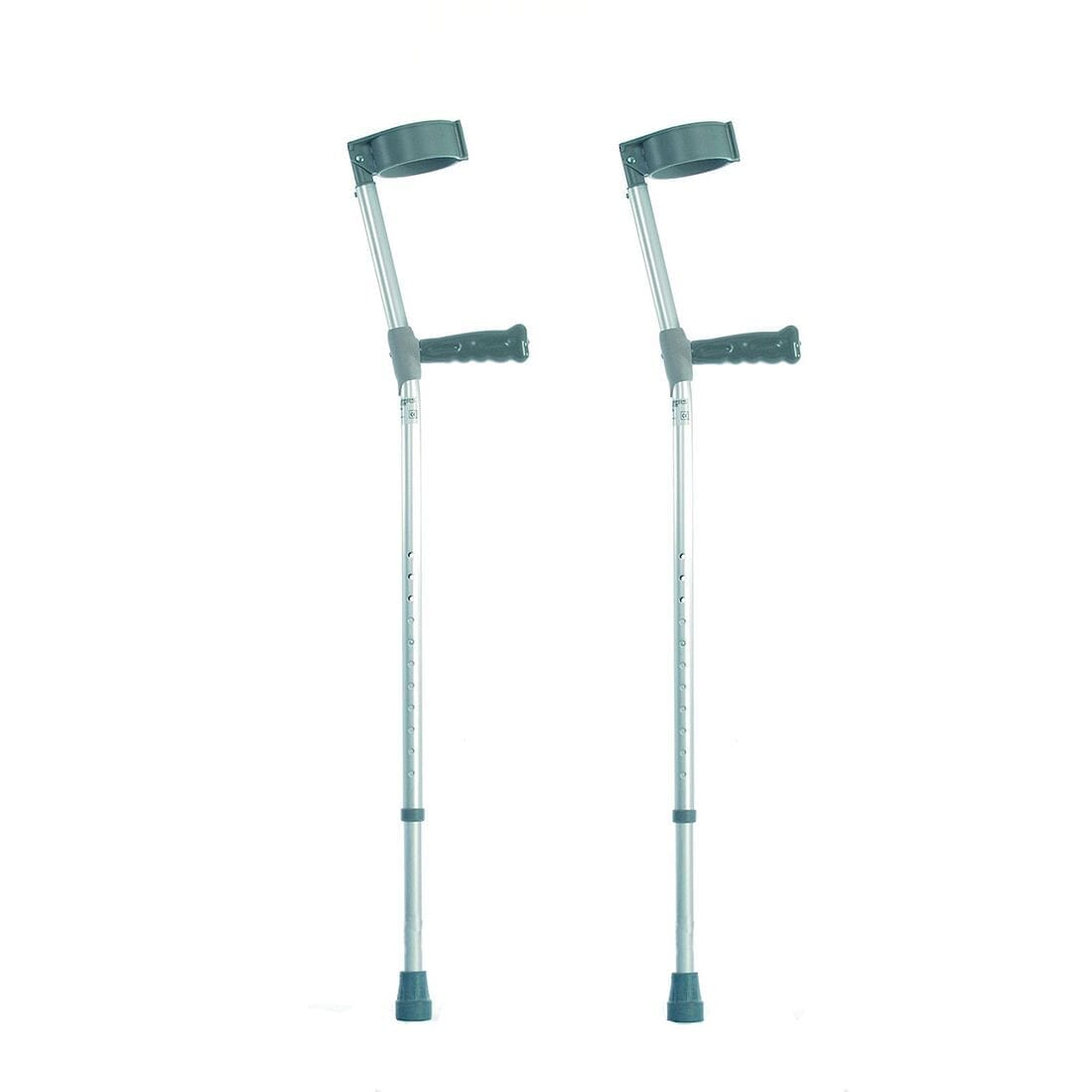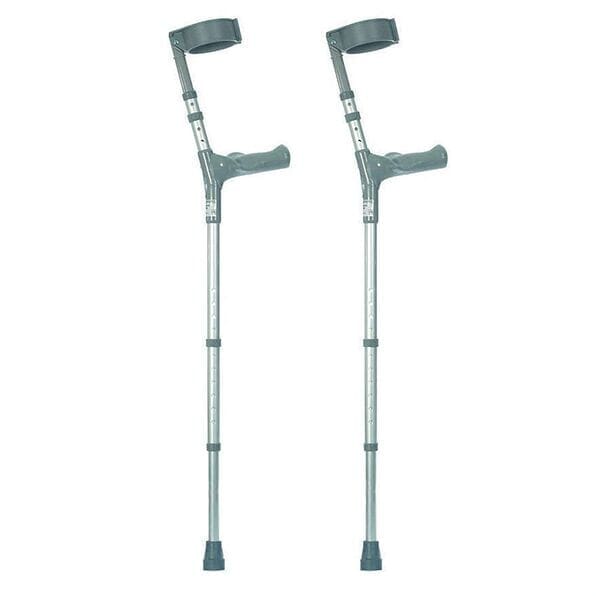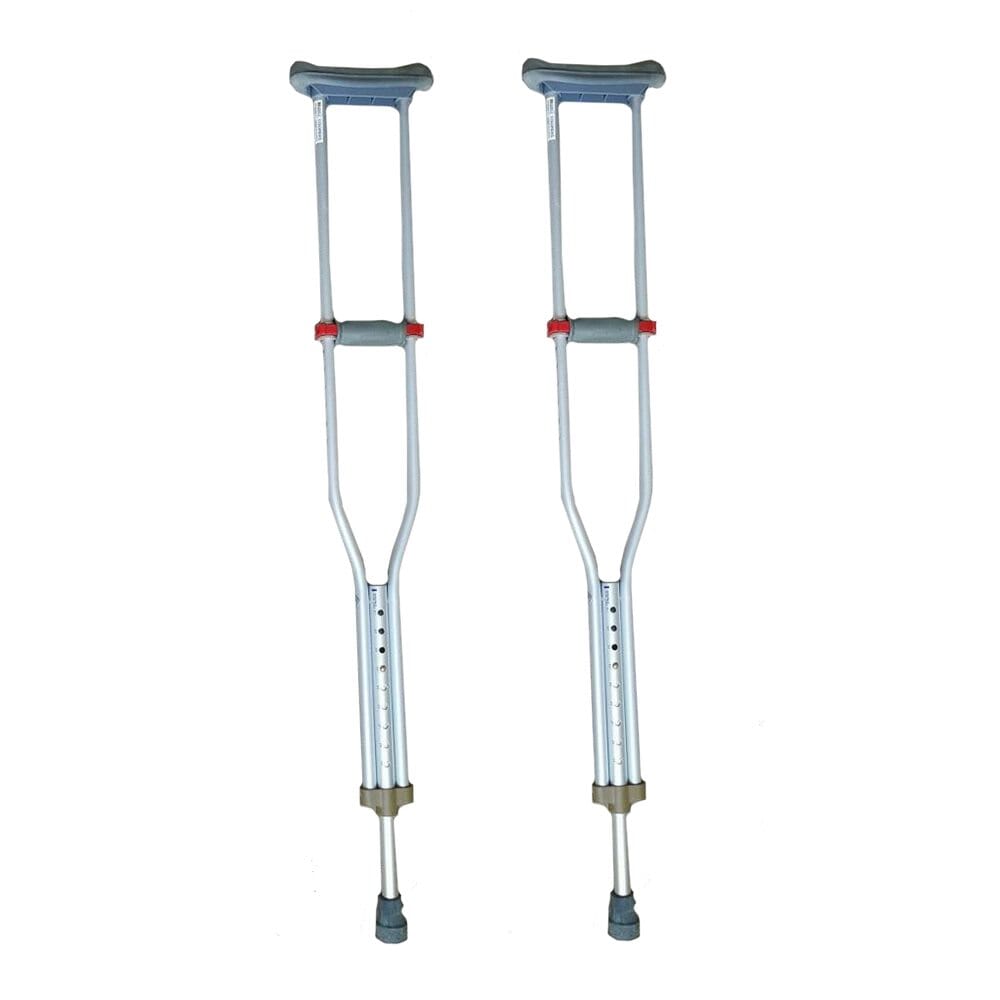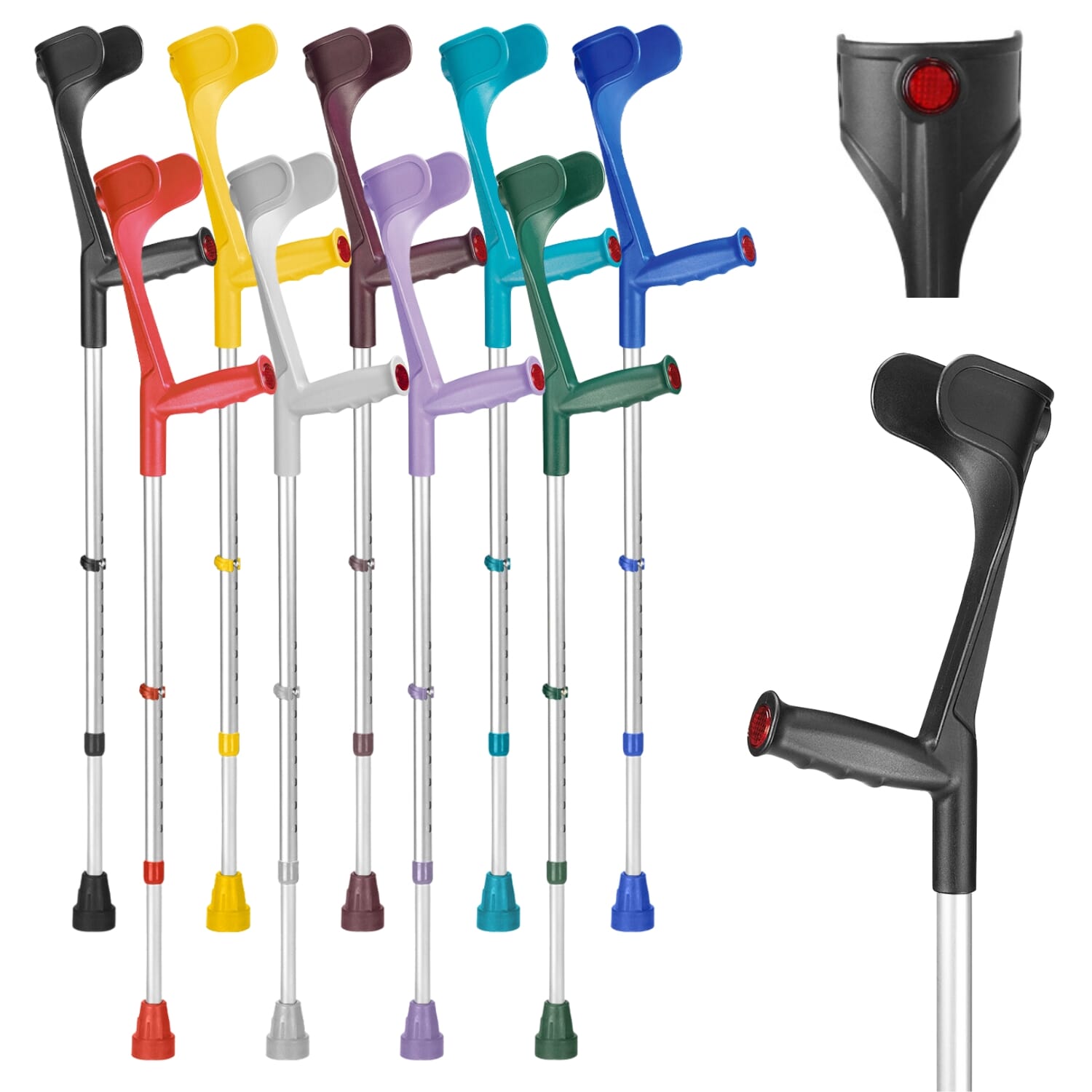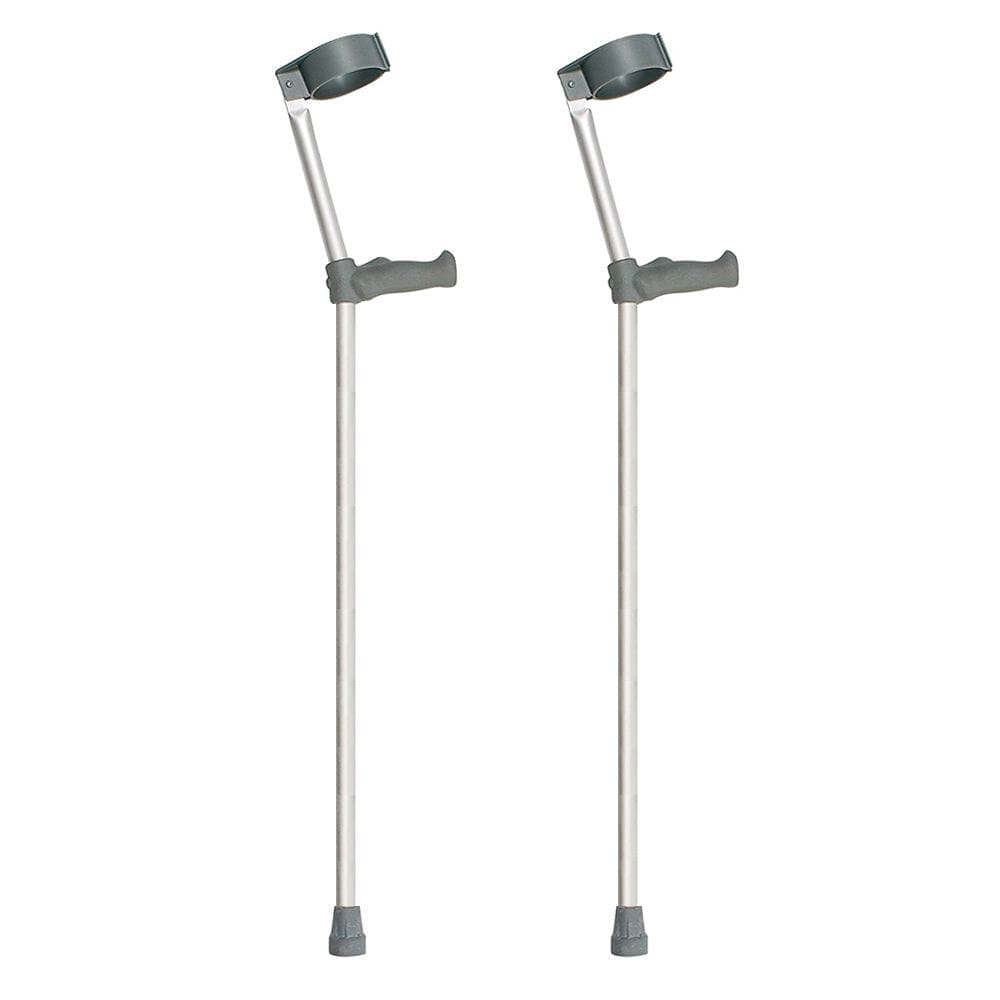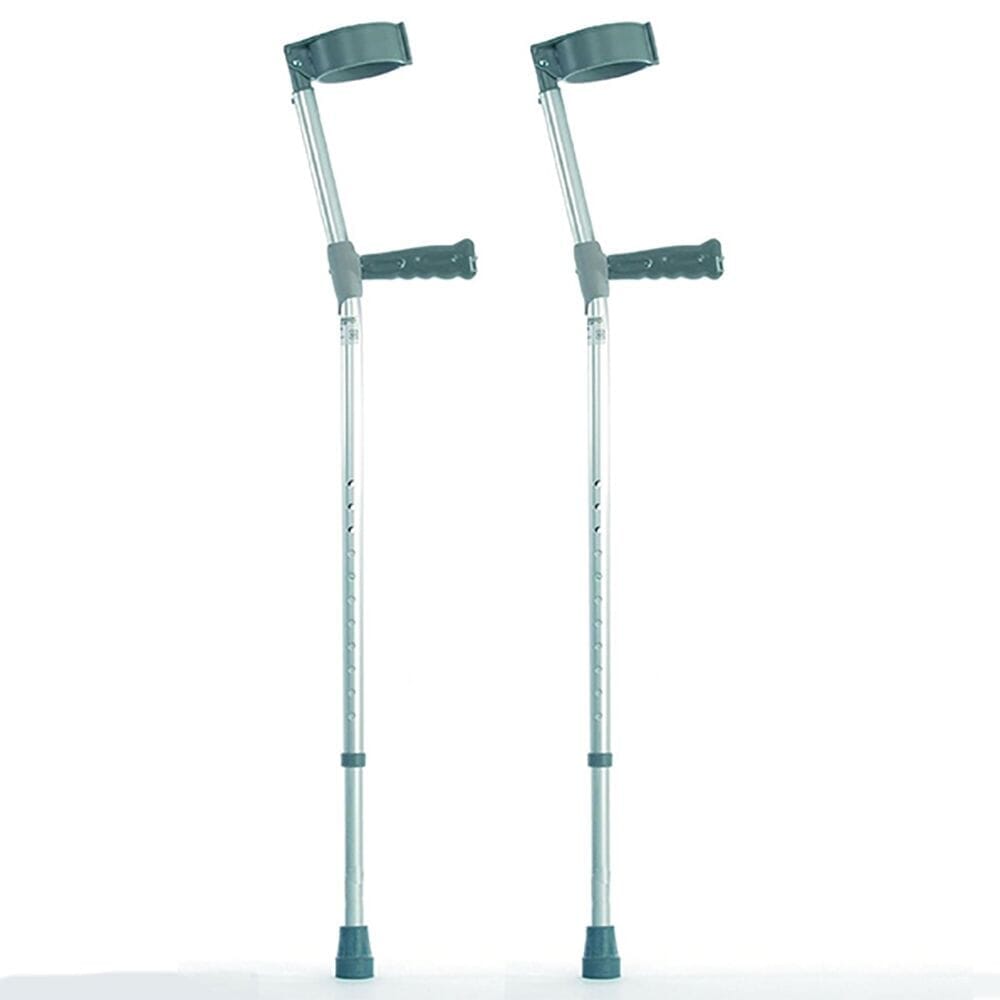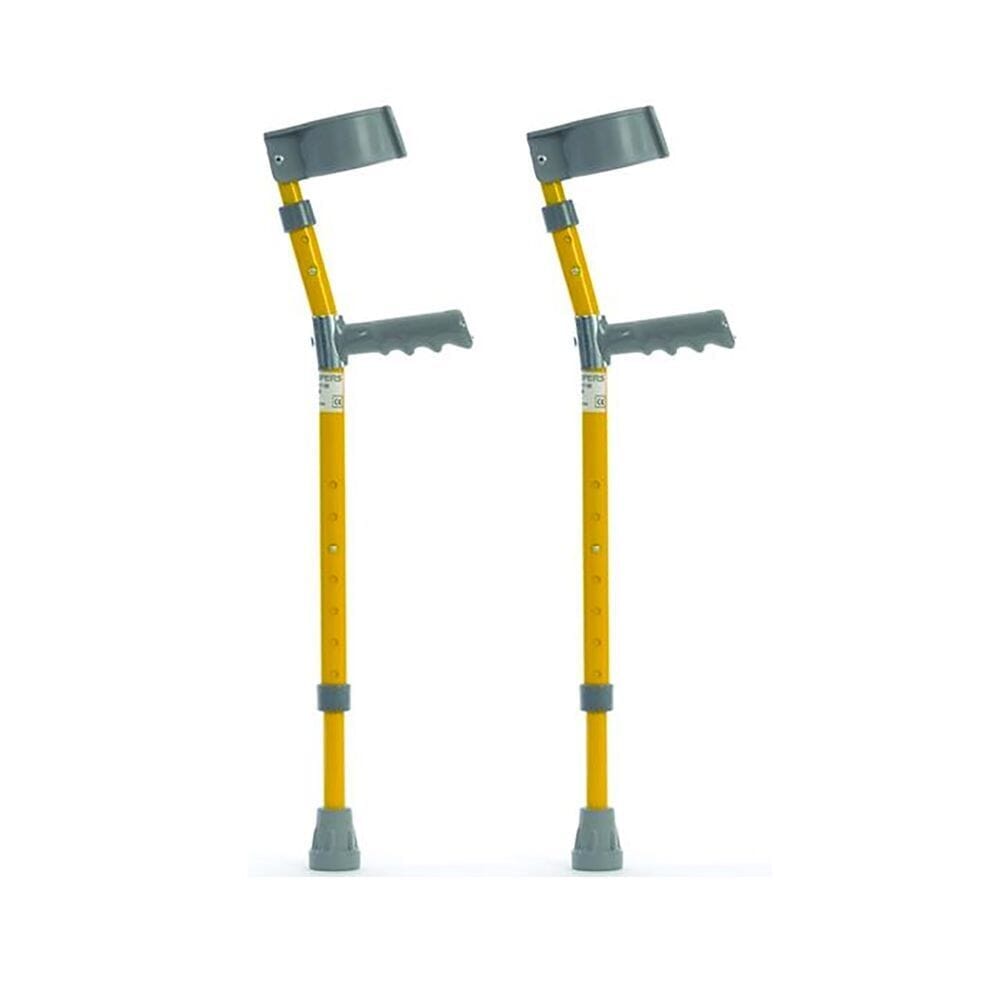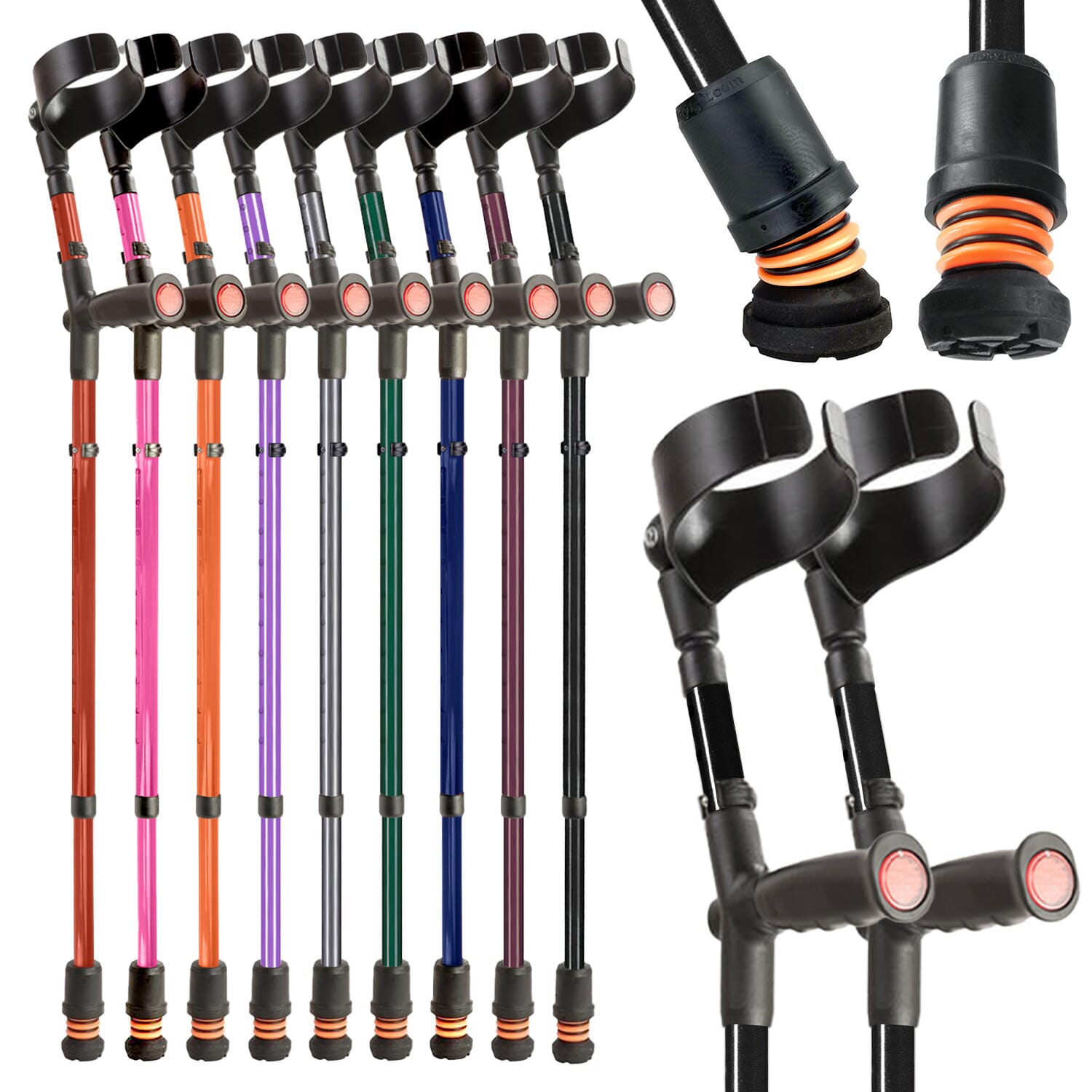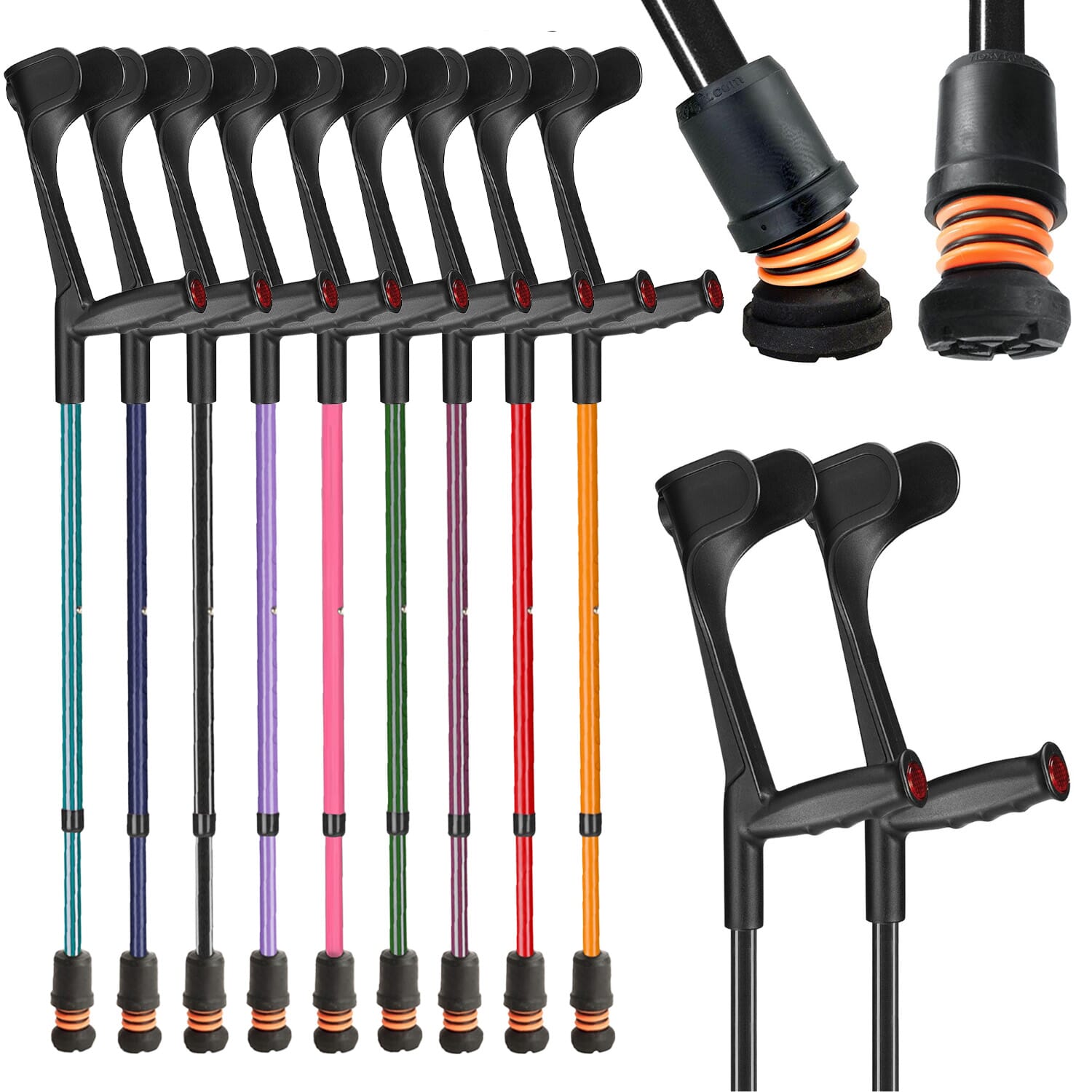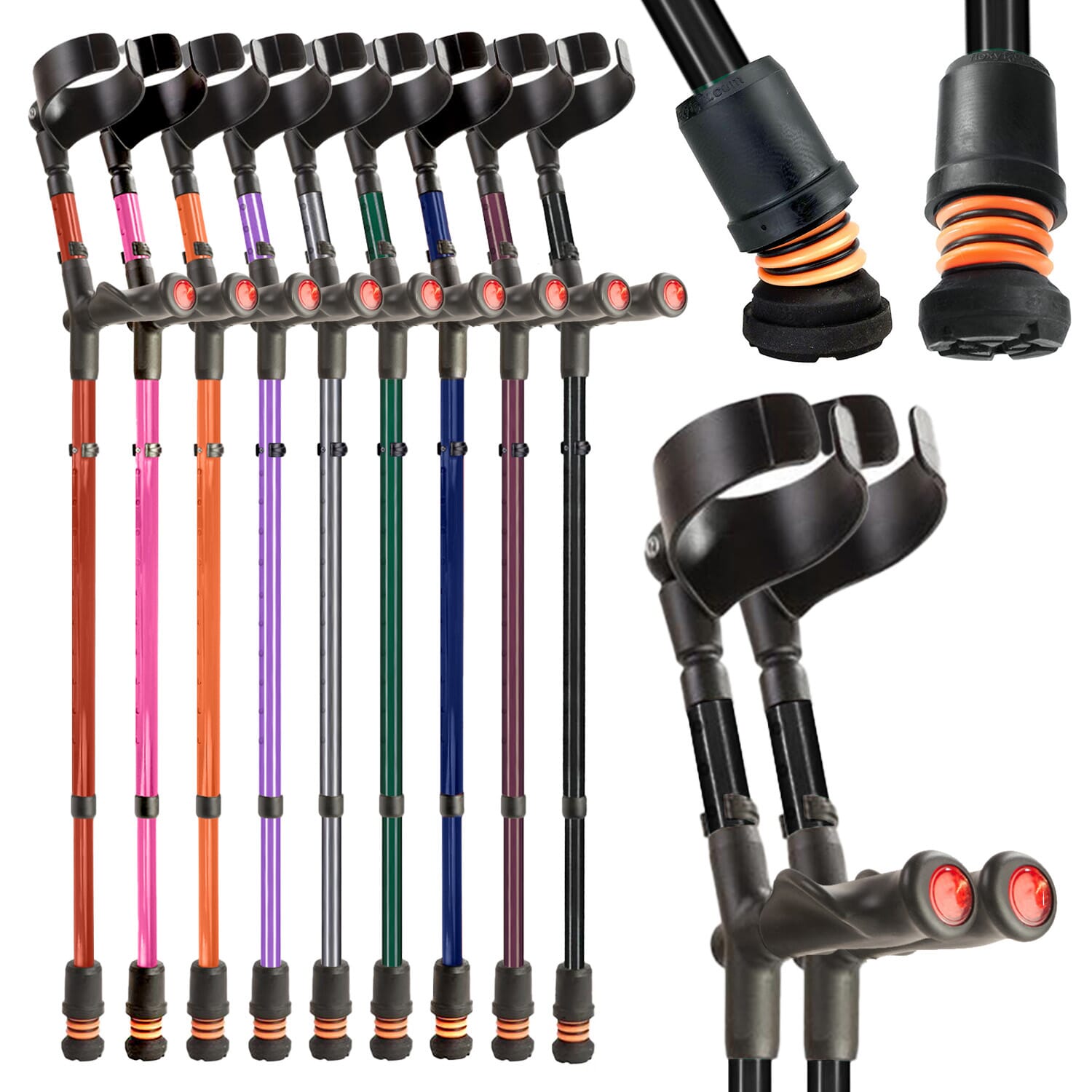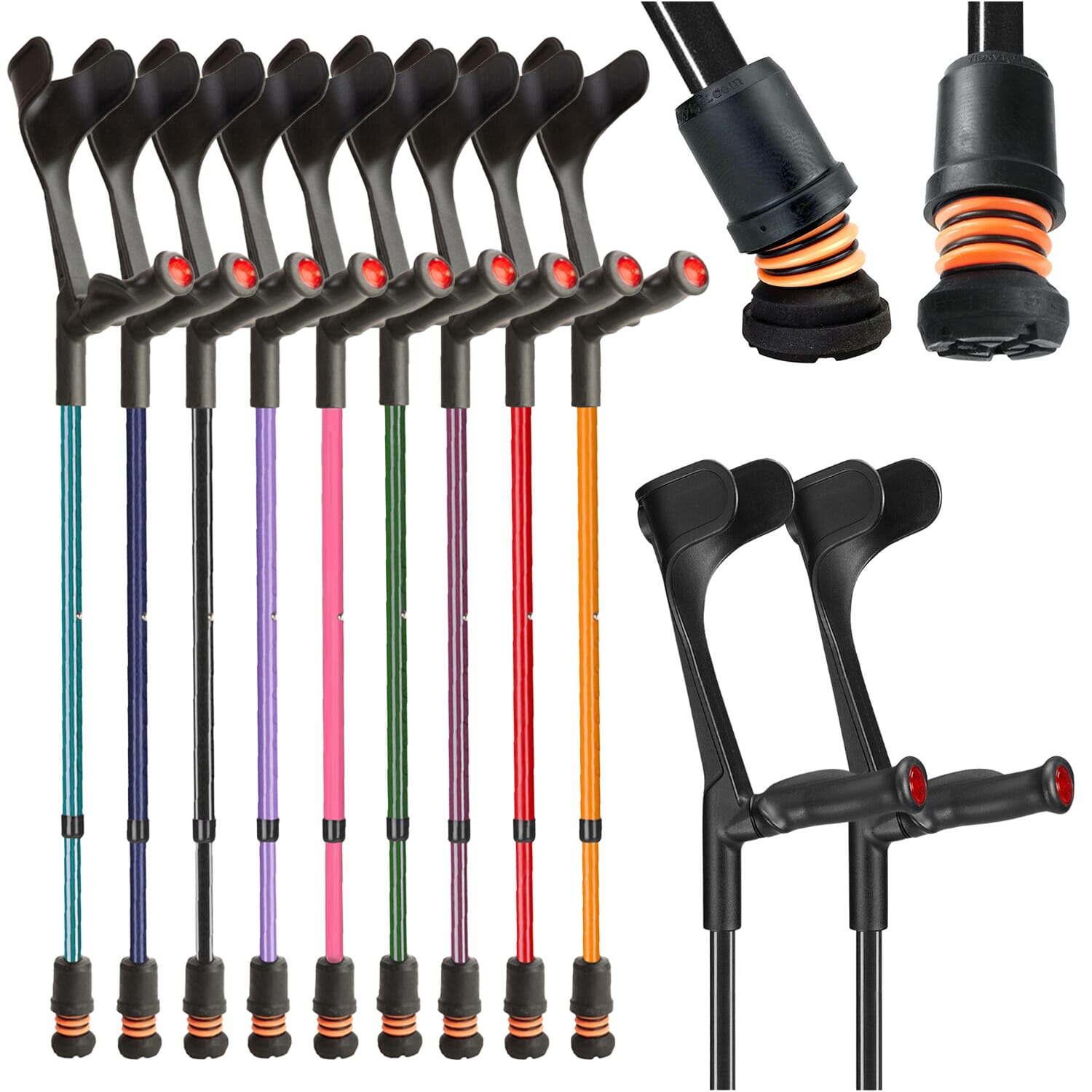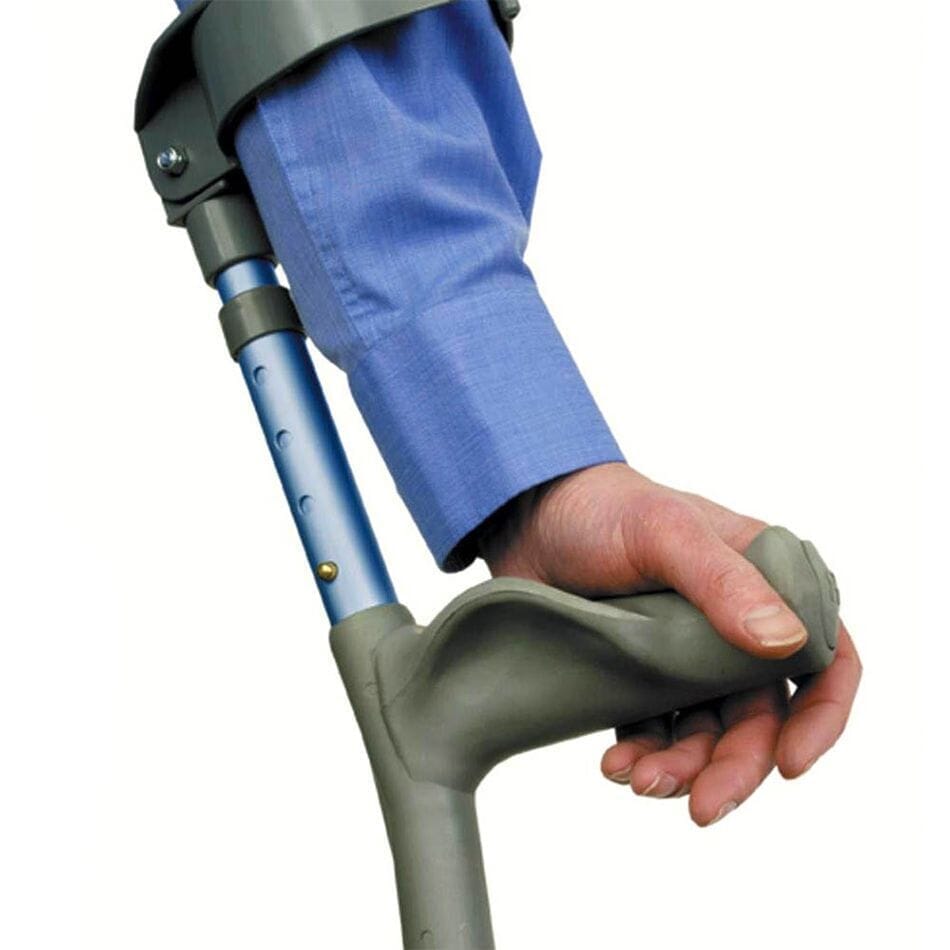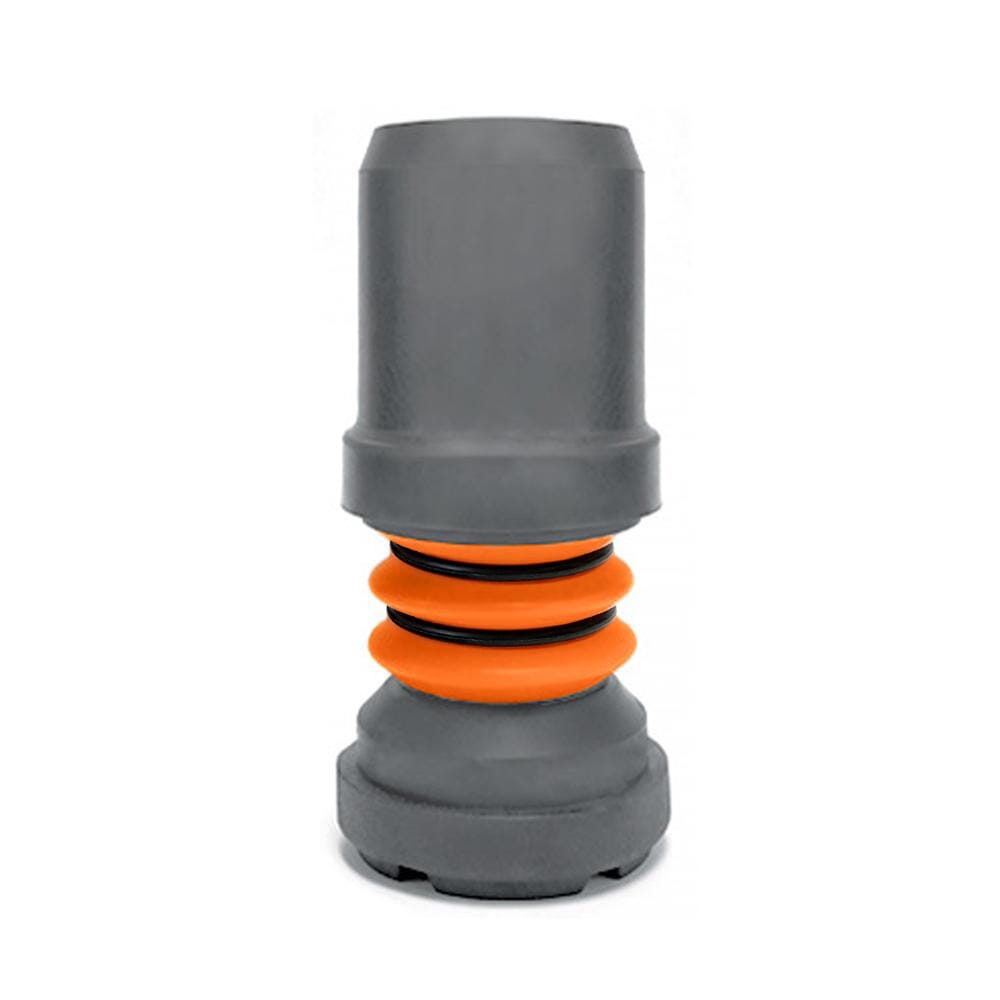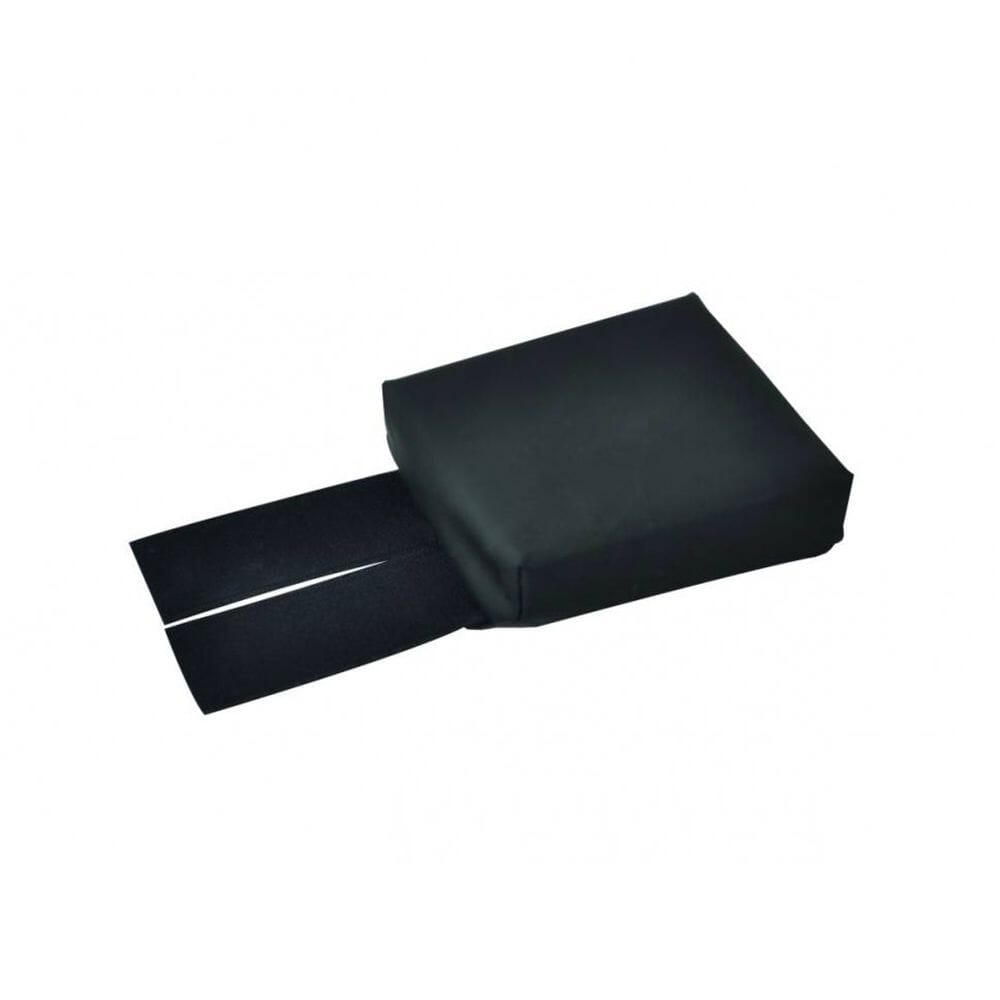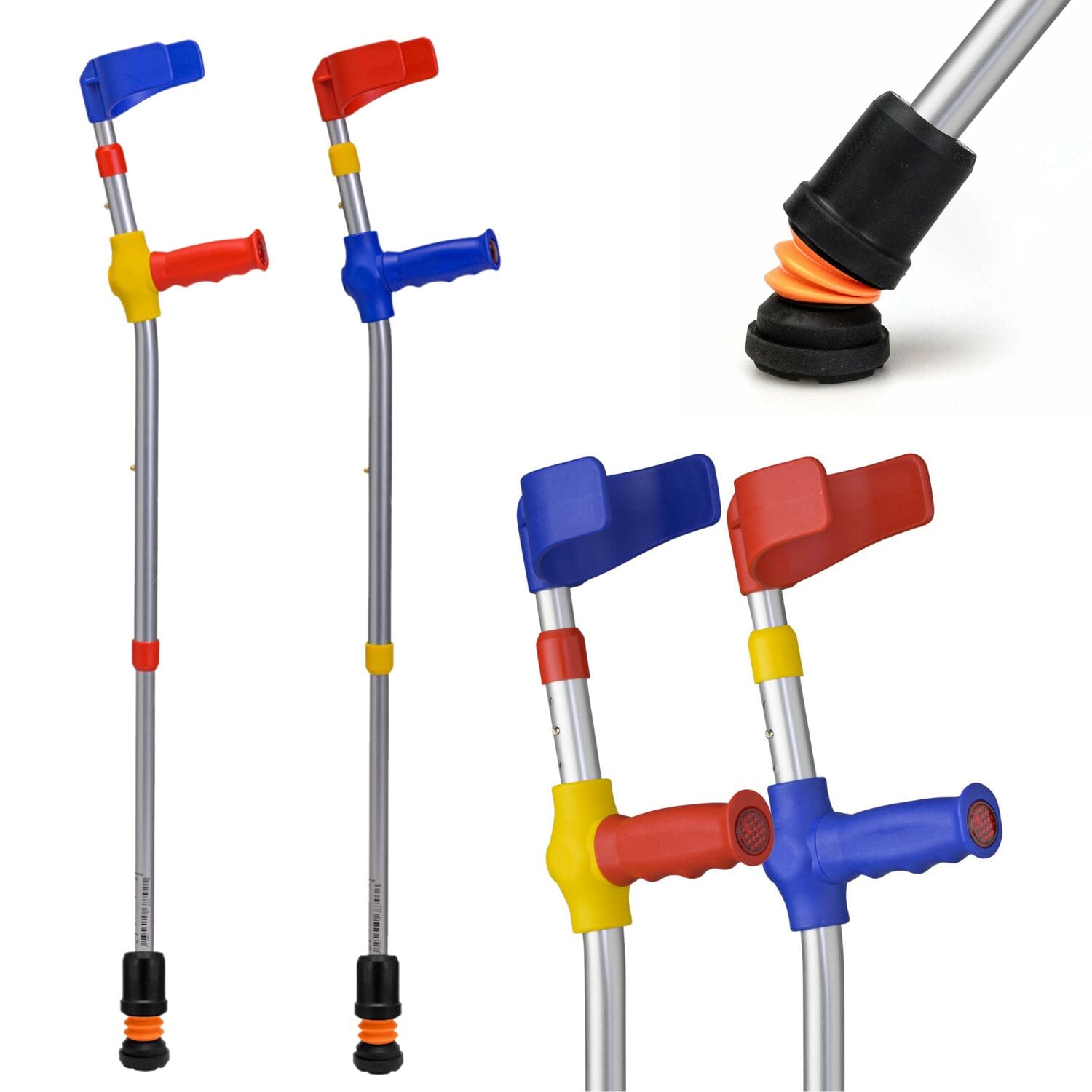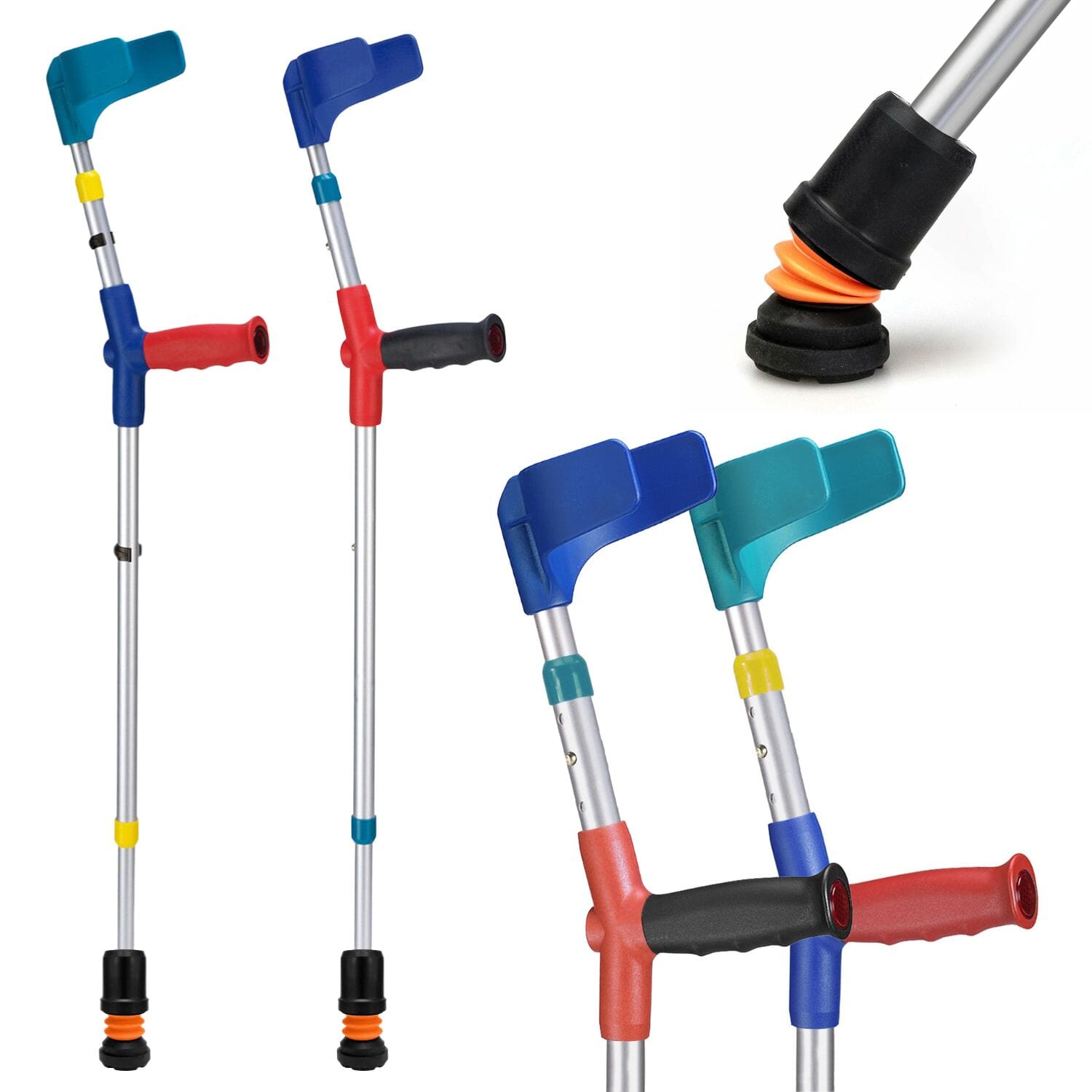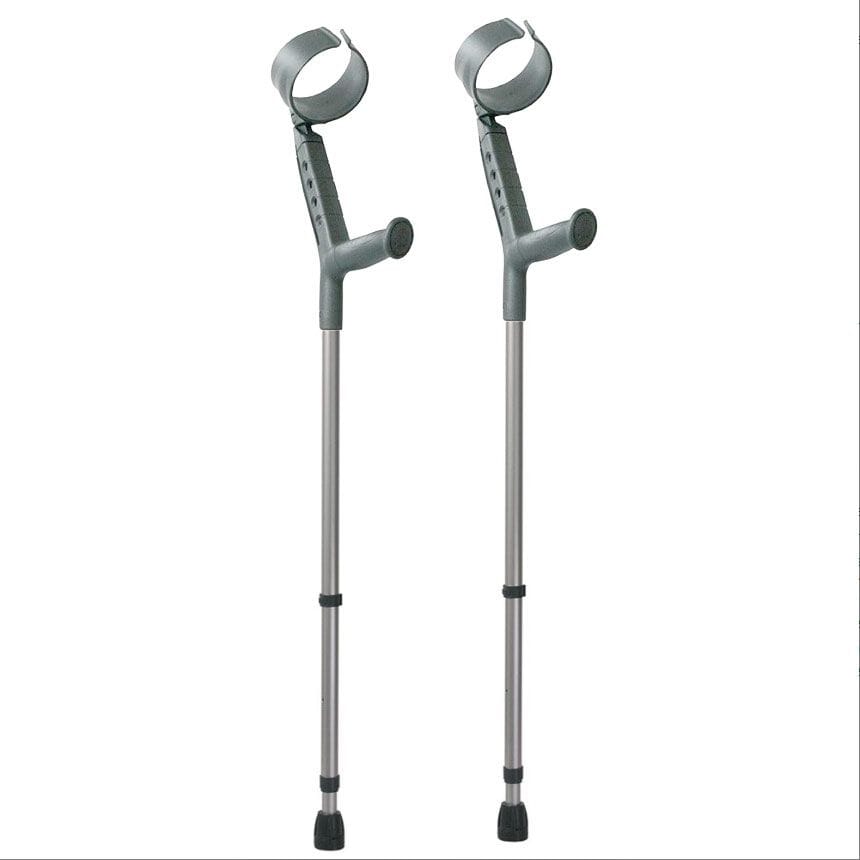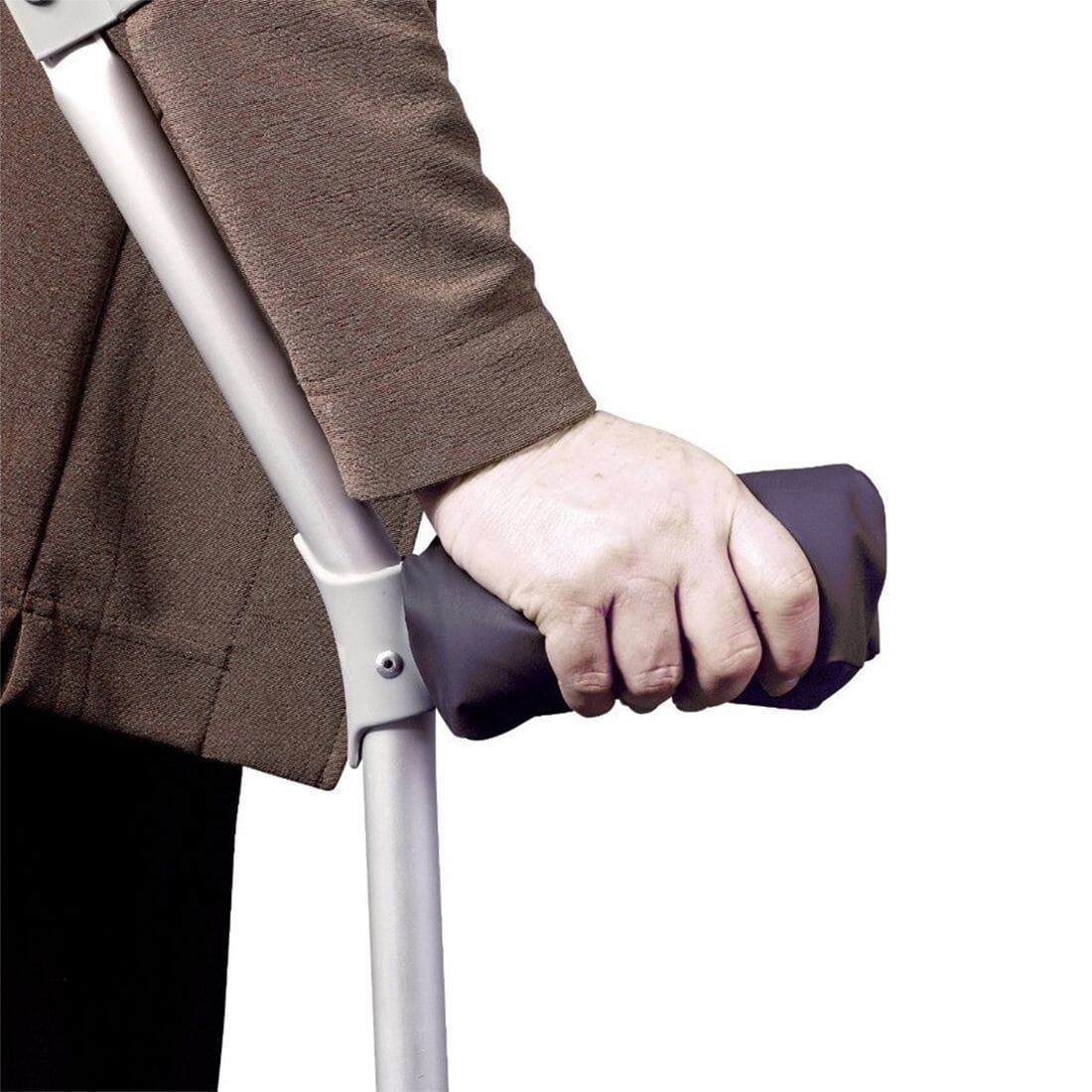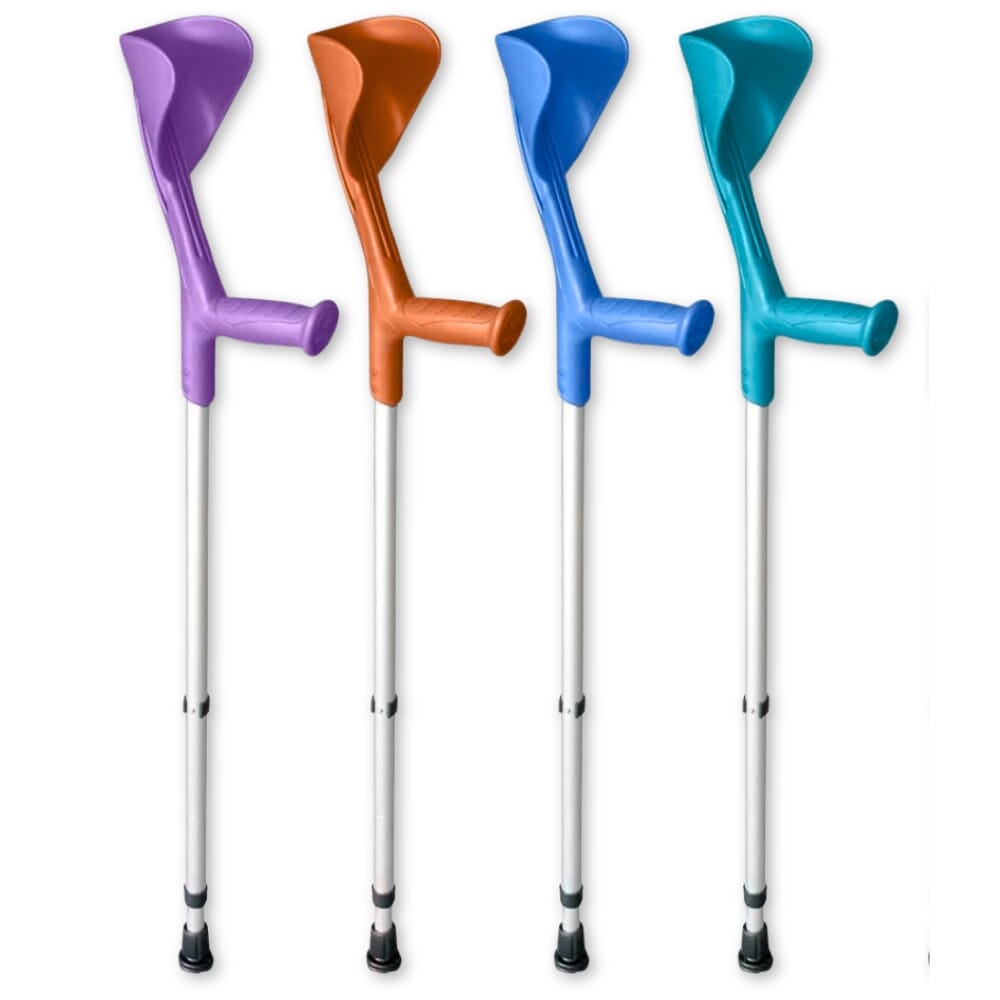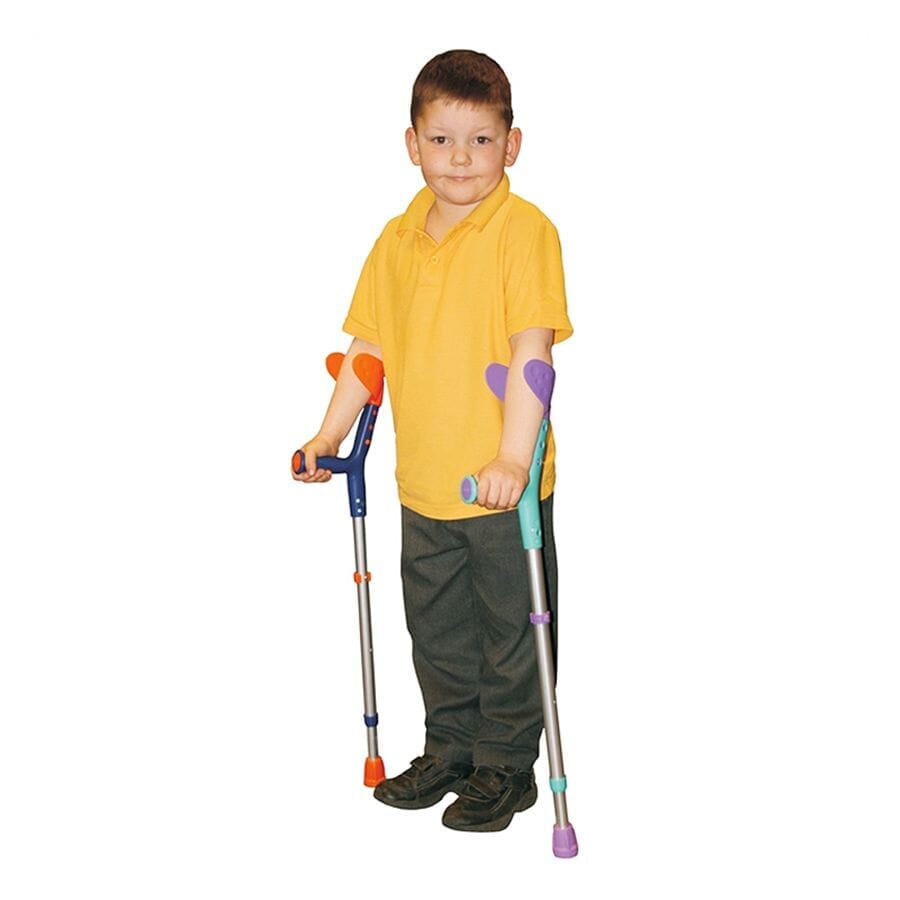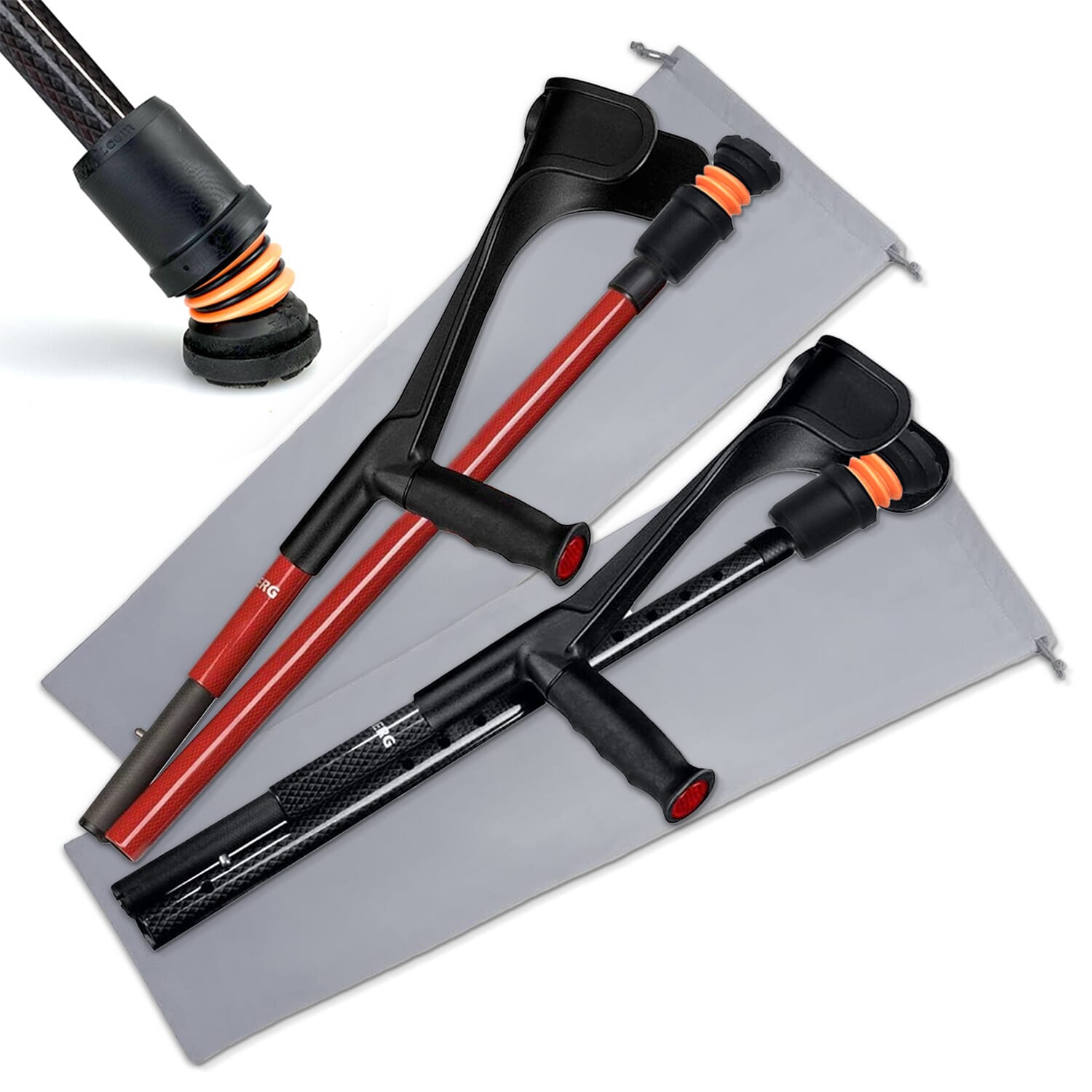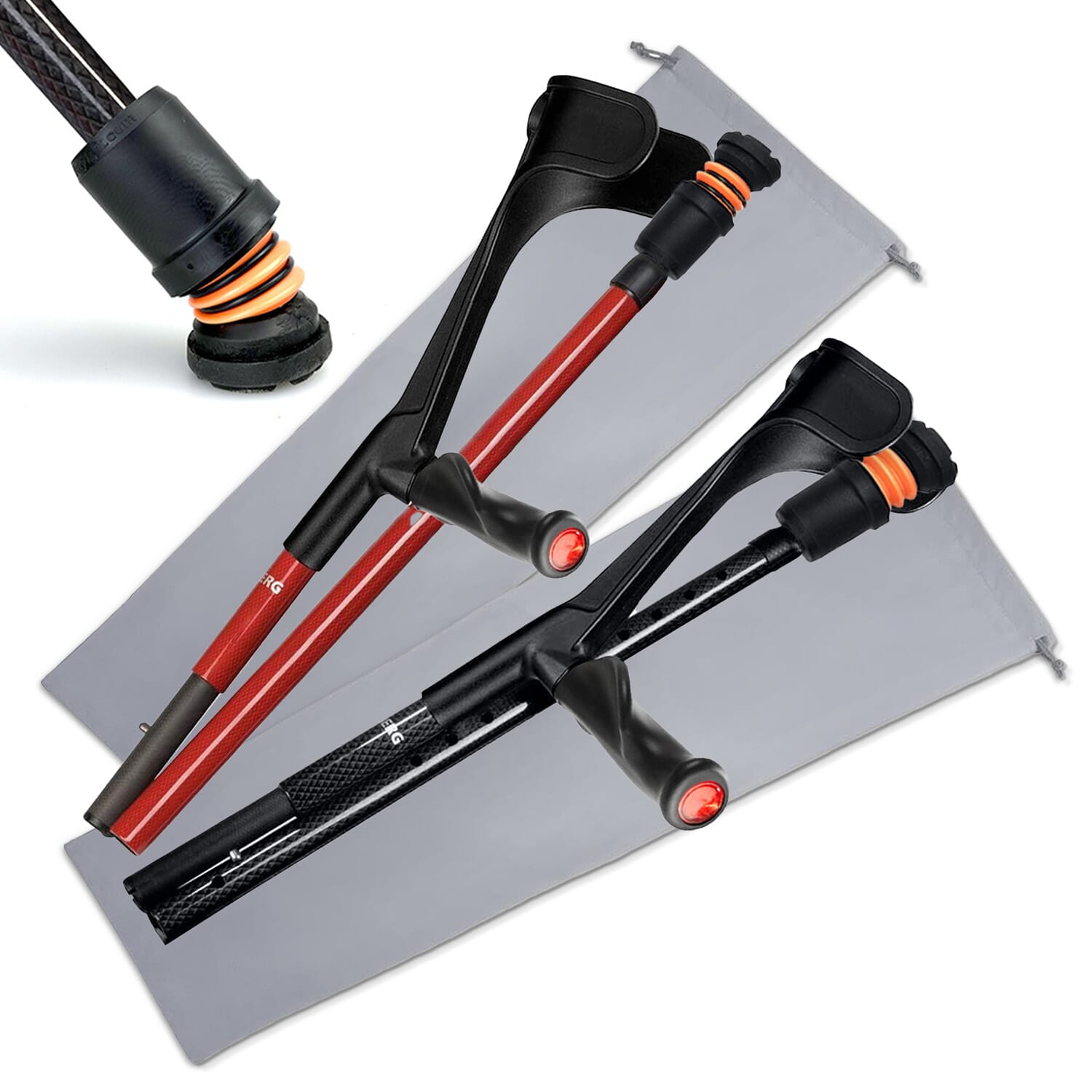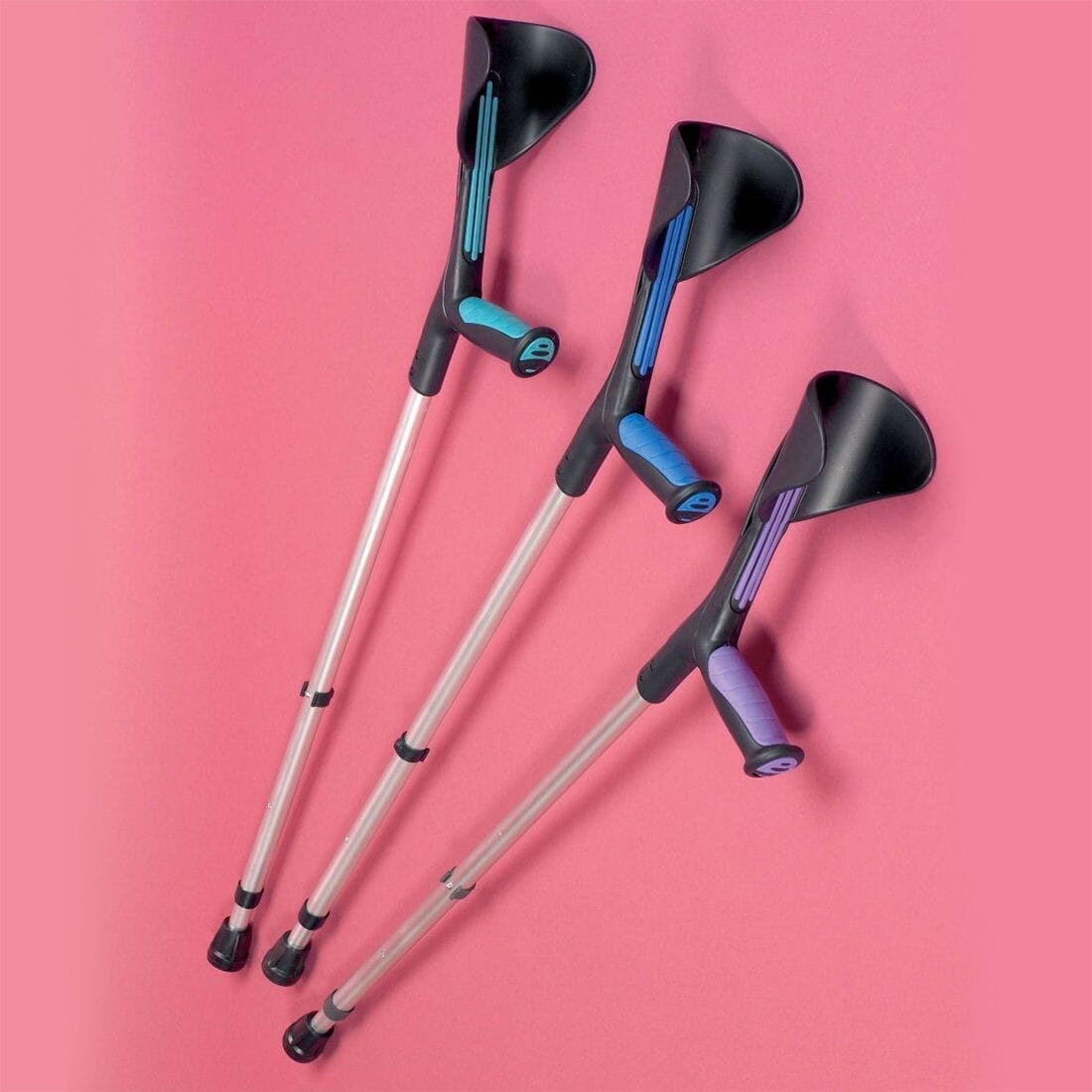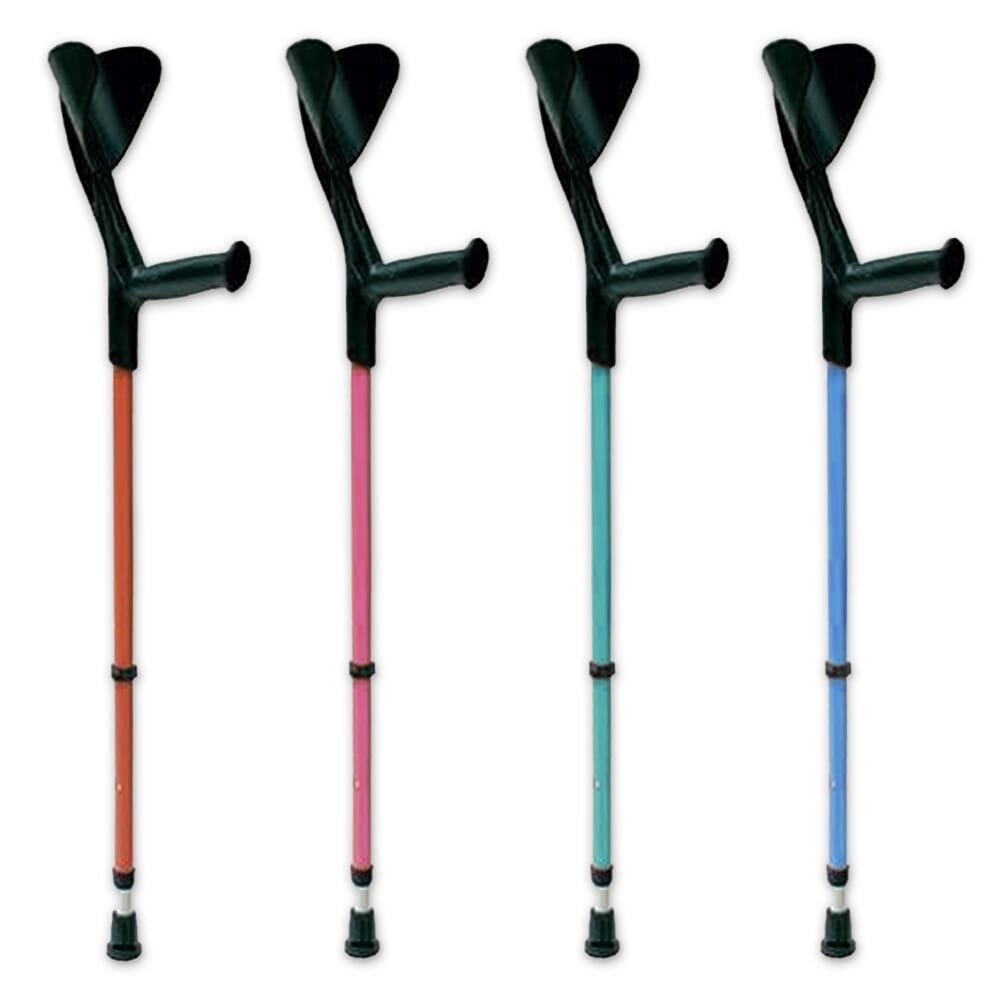Crutches & Crutch Accessories
Essential Aids offers a wide variety of high-quality crutches. Our products range from standard elbow crutches to 'Axilla' under-arm models. Many of our elbow crutches are available with comfy, ergonomic handles which spread the user's weight evenly through the hands. The crutches for sale here are available in pairs unless otherwise stated. We also supply children's crutches. Crutches reduce the stress on injured part of the body while enabling the user to retain mobility without needing a wheelchair. Essential Aids also supplies a range of crutch accessories.
Items 1-28 of 82
-
Available
Offers
Elbow Crutches - Double Adjustable
These double adjustable versions of the Elbow Crutches are sold as a pair.3 Options from£16.90with VAT Relief -
Available
Offers
Elbow Crutches With PVC Handles
These multi-adjusting elbow crutches have soft-touch comfortable grips - sold as a pair.5 Options from£16.40with VAT Relief -
Available
Offers
Elbow Crutches With Comfy Handles
With patented handles which spread weight for comfort - sold as a pair.2 Options from£24.40with VAT Relief -
Available
Offers
Aluminium Axilla Crutches
Featuring patented adjustable handles for precise sizing - sold as a pair.3 Options from£28.45with VAT Relief -
Available
Offers
Ossenberg Open Cuff Crutches
Low cost, colourful crutches that are both practical and attractive mobility aids that deliver maximum comfort and reliability when in use.18 Options from£12.70with VAT Relief -
Available
Offers
Permanent User Crutches
A high quality, aluminium crutch that is designed for long-term use.2 Options from£35.45with VAT Relief -
SPECIAL
OFFER
Adjustable Elbow Crutches
This is a pair of highly quality crutches which offer exceptional value for money.£18.90WAS £22.17with VAT Relief -
Available
Offers
Children's Elbow Crutches
Kids' crutches made from strong yet lightweight aluminium - sold as a pair.2 Options from£15.90with VAT Relief -
Available
Offers
Flexyfoot Soft Grip Double Adjustable Crutches
These crutches offer impressive adjustability, shock-absorbing Flexyfoot ferrules, and ergonomic handles for comfort.18 Options from£28.40with VAT Relief -
Available
Offers
Flexyfoot Open Cuff Soft Grip Crutches
These Flexyfoot Soft Grip Open Cuff Crutches provide essential support and assistance for individuals with limited mobility or those on the path to recovery from an injury.18 Options from£19.40with VAT Relief -
Available
Offers
Flexyfoot Comfort Grip Double Adjustable Crutches
Ergonomic handles and shock-absorbing Flexyfoot ferrules ensure comfort and stability.27 Options from£31.40with VAT Relief -
Available
Offers
Flexyfoot Open Cuff Comfort Grip Crutches
With ergonomic handles, shock-absorbing Flexyfoot ferrules, and customisable options, these crutches enhance comfort and promote independence.27 Options from£24.40with VAT Relief -
VAT Relief
Available
ForeArm Crutches (pair)
Feature contoured grips which spread pressure evenly, greatly improving user comfort.2 Options from£55.95with VAT Relief -
Available
Offers
Flexyfoot Crutch Ferrule - Grey
The grey Flexyfoot Crutch Ferrule is an essential accessory for individuals who rely on crutches for their mobility. Its innovative design significantly improves stability and security, providing a remarkable 50% increase in grip and traction when compared to standard rubber ferrules.12 Options from£5.90with VAT Relief -
SPECIAL
OFFER
Harley Crutch/Comfort Pads
This pair of hand pads for crutches prevents the handles digging into the user's hands.£20.90WAS £24.55with VAT Relief -
Available
Offers
Flexyfoot Soft Grip Double Adjustable Kids Crutches
Providing a secure and comfortable mobility solution for children, prioritising their well-being and confidence, these are the Flexyfoot Soft Grip Double Adjustable Kids Crutches.4 Options from£21.90with VAT Relief -
Available
Offers
Flexyfoot Soft Grip Double Adjustable Junior Crutches
The Flexyfoot Soft Grip Double Adjustable Junior Crutches offer a secure, comfortable, and supportive mobility solution for children, prioritising their well-being and confidence.4 Options from£21.90with VAT Relief -
VAT Relief
Available
ForeArm Crutches with Closed Cuff
Featuring pivoting closed cuffs, these elbow crutches are practical and stylish.£39.95with VAT Relief -
SPECIAL
OFFER
Visco Hand Pads
Stretchy foam hand pads which can be attached to the handles of most mobility aids.£21.17WAS £22.13with VAT Relief -
Available
Offers
Evolution Elbow Crutches (Pair)
These crutches are available in a number of colours and now come with Pivoflex ferrules.4 Options from£22.40with VAT Relief -
VAT Relief
Available
Tiki Childrens Crutches
Modern, colourful crutches with adjustable length and matching forearm rests.2 Options from£33.40with VAT Relief -
Available
Offers
Flexyfoot Carbon Fibre Folding Crutches
The Flexyfoot Carbon Fibre Folding Crutches are functional and practical mobility aids that are incredibly useful for individuals with limited mobility or those recovering from injury.4 Options from£79.90with VAT Relief -
Available
Offers
Flexyfoot Carbon Fibre Comfort Grip Folding Crutches
The Flexyfoot Carbon Fibre Comfort Grip Folding Crutches offer a functional and practical solution for individuals with limited mobility or those on the path to recovery from injuries.6 Options from£83.90with VAT Relief -
SPECIAL
OFFER
Comfort and Style Crutches (Pair)
These crutches are height adjustable, practical and have road handholds for extra comfort.£24.90WAS £34.90with VAT Relief -
Available
Offers
Advance Fashion Elbow Crutches
The Advance Fashion crutches have a choice of coloured shafts.3 Options from£38.90with VAT Relief -
Available
Offers
Evolution Fashion Elbow Crutches
These attractive crutches have bright shafts which are available in several colours.4 Options from£30.90with VAT Relief -
SPECIAL
OFFER
Heavy Duty Crutches
Durable support for larger people who require some assistance while weight bearing. With ergonomic handle.£39.95WAS £79.90with VAT Relief -
SPECIAL
OFFER
Crutch Pod
This rigid pocket for crutches lets you carry small objects while keeping your hands free to use the crutch handles.£11.90WAS £15.58inc VAT
Frequently Asked Questions
What's the purpose of crutches?
What are the benefits of using a pair of crutches?
What's the difference between different types of crutches?
What are the rubber feet for crutches actually called?
Are different hand-grips available for crutches?
What sort of accessories are available for crutches?
